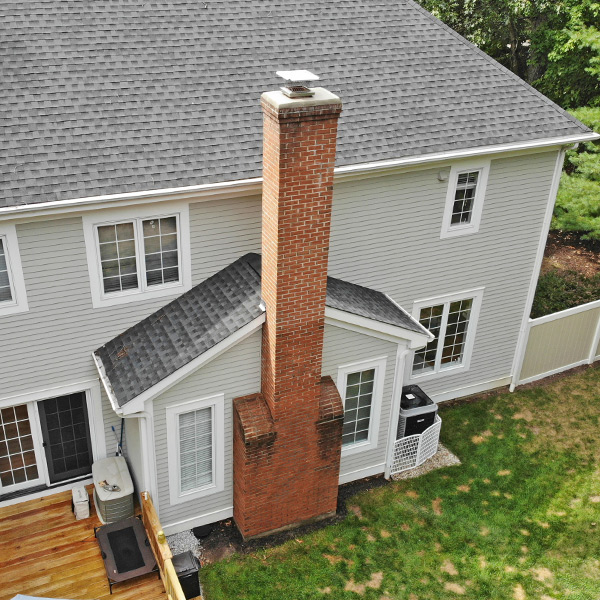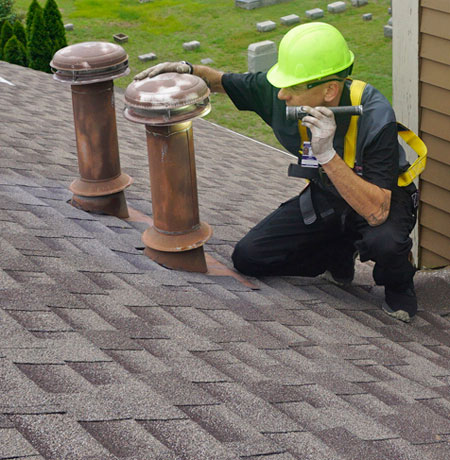Difference Between a Chimney and a Vent
Have you ever looked at the homes throughout your neighborhood while out on an evening walk? If so, you probably noticed that some homes have chimneys and vents. Others only have vents. Do they serve the same purpose and the only difference is aesthetics? Let’s look at the difference between a chimney and a vent.
 What is the role of both?
What is the role of both?
First, let’s talk about the role of both a chimney and a vent. They serve similar purposes, allowing gasses and fumes to exit your home. The difference between a chimney and a vent is the type of gasses they are moving out.
Vents often work with your HVAC and plumbing systems. A chimney is most associated with your fireplace system. However, physically there are other differences as well, mostly related to their respective functions. Those include height, power requirements, and masonry.
Chimney height considerations
When you burn a fire in your fireplace, the combustion process releases dangerous toxins and chemicals. These pollutants need to safely exit your home. However, to guarantee they do not reenter, a chimney needs to be taller than your roof.
Vent height considerations
However, vents also have height requirements. They need to be taller than any other part of your ventilation system. Much of this has to do with the way your various home systems work, such as airflow within your HVAC and plumbing network.
Do they need electricity?
Another difference between a chimney and a vent is whether or not the system requires electricity. A chimney will not, as the only moving part within it (your damper) is operated manually.
Vents can have electricity. A common example is within your attic. When a sensor detects a relative rise in temperature or humidity, the power kicks into the vent so that it opens and sometimes even activates an attic fan. When conditions return to normal, the vent will close.
When do you need masonry?
In virtually every scenario, you will only need masonry when you’re dealing with a fireplace. Your vents do not need it. Your Northeastern Chimney technician, when visiting your home, will also perform a safety inspection to ensure the masonry of your chimney is in working order.
 The biggest difference between a chimney and a vent
The biggest difference between a chimney and a vent
As we mentioned, the difference between a chimney and a vent is the type of gasses they handle. Simply put, a vent does not require temperature protection to mitigate heat transfer. The gasses that exit your home via a vent will not start a fire.
A chimney will have some type of heat-resistant flue liner to protect the various parts of your home. This liner, whether tile or stainless steel, keeps your roof, ceiling, and drywall from the extremely high temperatures of burning a fire.
Which is best for your home?
Nearly every home will have at least one type of vent, though practically speaking they’ll likely have several. In addition, homes with a fireplace will need some method of venting smoke and gasses to the outside.
If you need help with this or other chimney-related projects, we’re here. Contact the team at Northeastern Chimney LLC by giving us a call at
860-233-5770 or send a quick message.
The post Difference Between a Chimney and a Vent appeared first on .
This post first appeared on https://www.mychimney.com